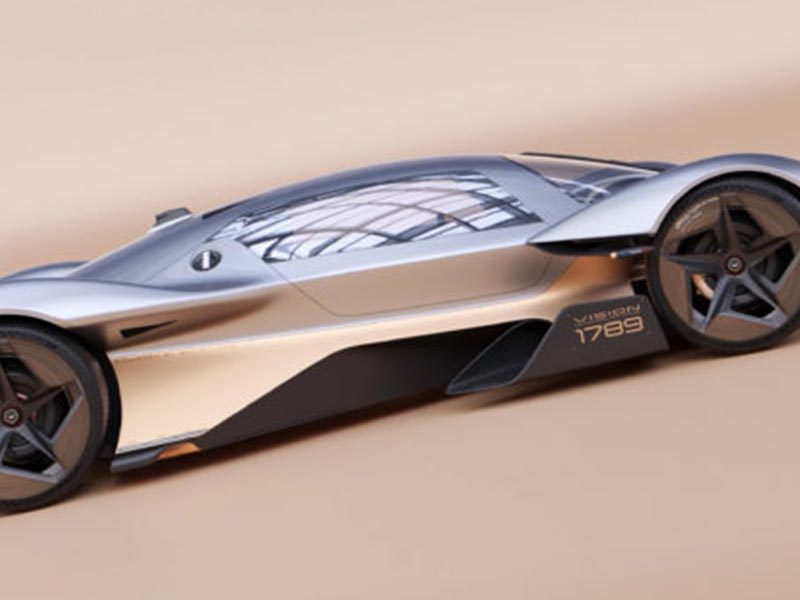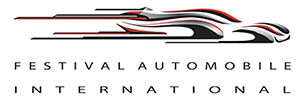“From the first touch of the titanium accelerator pedal to the scream of the V12 at 12,100 rpm, the driver’s experience will surpass any supercar ever built. No other road car can offer such a combination of power, instantaneous responsiveness and driver feedback in such a direct and focused way, while remaining comfortable, refined and usable in everyday driving”.
Gordon Murray
Design – purity made possible by engineering
Murray: “Superior aerodynamics allow us to avoid the current tendency of supercars to have exaggerated wings, vents and ducts. I was determined to create a clean, pure shape that would remain timeless, ensuring the T.50 will still look fresh in 30 years’ time.
The most dominant design features of the T.50 are purity and balance. With the most advanced and efficient aerodynamics ever seen on a road car, the T.50’s exterior meets Murray’s preference for simple, timeless lines and clean surfaces. The design does not rely on fenders, vents or ducts to enhance its performance capabilities. Rather, the eye is drawn to the compact, balanced proportions and conductor-centric symmetry.
Stylistically, the T.50 is far from drama-free. The remote-opening dihedral doors rise and step forward, creating a striking visual impact, while making it easy to get in and out, even in tight parking spaces. These doors are connected by a pair of gull-like, glass-topped rear openings that hinge along the spine of the T.50 to reveal the V12 powertrain – free-form covers that provide easy visibility and access for maintenance.
The V12 powertrain has been unveiled. It is easy to see and access for maintenance. With all four doors open, revealing two thirds of the car’s interior, the T.50 looks like another world – like a winged predatory insect preparing for flight. The right and left doors as well as the engine bonnet doors can be opened remotely with the key.
As with every element of the T.50, the importance of the driver is very evident in the styling. One of the most outstanding features of the car’s design highlights the central driving position and the natural balance that gives it. A central line starts with the siren badge mounted on the nose and continues into the passenger compartment, above the instrument cluster, cutting the driver’s seat in half and raising the rear bulkhead. On the outside, the line is reflected by a tiny spine that runs from the base of the dynamic air intake to the upper edge of the fan housing at the rear.
This line underlines the car’s symmetry and innate balance. Up front, a pair of state-of-the-art high-intensity LED headlights provide a clear sign of recognition for Murray’s iconic F1. Each headlamp features a pair of deep, horizontally aligned rings that act as daytime running lights and turn signals. In the centre of each ring, the low beam and high beam lights improve the range and reach of the previous, industry-leading supercar headlamp by 15 per cent.
A heat sink and a series of slots below and above the headlights circulate air around each fitting to cool the unit. Many manufacturers hide this cooling function, while Murray has played to his ideal of creating an “art of engineering” by turning this functional requirement into a distinctive styling element.
Following the central axis upwards and above the steeply sloping windscreen, the eye is drawn to a dynamic roof-mounted air intake that powers the V12 and adds extra power as the supercar picks up speed. From front to back, the roof is glazed on either side of the central spine, creating an incredible feeling of space inside and a clean exterior appearance. As the spine descends towards the rear of the car, the glazing continues, revealing the V12 engine beneath its carbon fibre airbox.
The rear axle is heavily sculpted to facilitate airflow to the active spoilers. From the rear window, air flows under the rear axle to help cool the engine oil – in streamline mode, this air is channelled and ejected by the rear-mounted fan. The black inlet contrasts with the painted bodywork and blends in with the black fan housing, which is considerably higher than the rear deck level and extends beyond the rear lip of the two active spoilers on either side of the fan outlet by 400mm.
The fan body is flanked by two 80 mm diameter exhaust outlets which are located inside a black grid with an elongated hexagonal pattern extending across the entire width of the rear end. In the outermost corners of the car, circular red LED tail lights are eye-catching with their transparent 3D shapes that reflect light outwards to create an elegant focal point. These units also act as rear turn signals.














